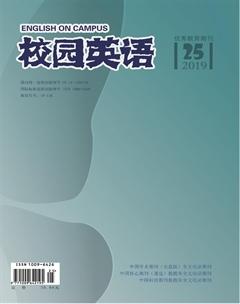An Analysis of the C-E Translation of Network Buzzwords
【Abstract】In recent years, due to the rapid development of the Internet and its widespread use in China, new words that reflect social life have rapidly become popular on the Internet. These new online words which are called “hot words” and “fashion words” are simple and novel. They are words with unique formation methods, vivid images, strong feelings, rich connotation and characteristics of the times. With the popularity of network hot words, how to translate Internet buzzwords into “art” has become a hot topic for the majority of translators.
【Key words】Internet; Network buzzwords; English translation
【作者简介】韩英慧(1993.09.09-),女,汉族,山西运城新绛县人,长安大学外国语学院2017级外国语言学及应用语言学专业,硕士研究生,研究方向:语用学。
1. Introduction
Network buzzwords is a term, which is used widely by people in daily life on the Internet. It is an emerging language style that is distinct from the traditional print media. With the development of the network, these buzzwords play a more and more important role in communicating with each other. The main features of the network language are: the fast speed of information dissemination, large amount of information, convenient, concise and easy to understand.
2. Theoretical Bases
Dynamic equivalence is defined in terms of the degree to which the receptors of the message in the receptor language respond to it in substantially the same manner as the receptors in the source language. This response can never be identical, for the cultural and historical settings are too different, but there should be a high degree of equivalence of response, or the translation will have failed to accomplish its purpose. (Nida,2003) Formal equivalence is the minimum standard of translation, which emphasizes the equivalence of word-to-word, sentence-to-sentence and concept-to-concept in translation in order to achieve complete equivalence in the parts of speech, word order and sentence order between the target language and the source language.
3. C-E Translation of Network Buzzwords
3.1 Literal translation
Literal translation, or direct translation, refers to translate a sentence originally, keep the original form, including construction of sentence, meaning of the original words, and metaphor of the original and so on(劉宓庆,1999).
In C-E translation of network buzzwords, the use of literal translation is wide. For example, “友谊的小船说翻就翻” can be translated as “The boat of friendship will be overturned at once”. This buzzword refers to the friendship cannot stand the test, and it can change easily. And another example is “小目标.” This buzzword occurred when Wang Jianlin talked about his ideas about the entrepreneurship among the young. So, 小目标can be translated as small target. And besides, another example can also use the literal translation, that is “厉害了,我的哥.” This buzzword is used to express ones admiration to someone else. This sentence can be translated literally as “My brother, youre wonderful.”
3.2 Free translation
Free translation is a skill of according to the meaning of the original, without paying attention to the details and translation would also be fluent and natural(孫致礼,1999). Compare with literal translation, free translation need not pay attention to the form of the original.
There are some examples in network buzzwords to use this method. The first example is “洪荒之力”.This phrase can be translated as “prehistorical powers”. The phrase is used to describe ones powerful force. And the second example is “吃瓜群众”. This phrase describes some persons who dont know the accurate situation and just observe the development of the situation. So, it can be translated as “onlooker,” “spectator” or “viewer” and so on.
4. Conclusion
As one of the most dynamic languages in the world, popular words permeate peoples daily lives extensively through the internet and other medias. The translation of online popular words plays an increasingly important role in intercultural communication. As a translator, only if we fully understand the linguistic features of popular online terms, follow the corresponding principles of translation and choose appropriate translation methods to carry out translation activities, our translation level of popular online terms can be improved.
References:
[1]Eugene. A. Nida & Charles R. Taber. The Theory and Practice of Translation[M]. Shanghai: Shanghai Foreign Language Education, 2004(12).
[2]高若腾.从网络词汇看翻译方法[J].外语研究,2006.

